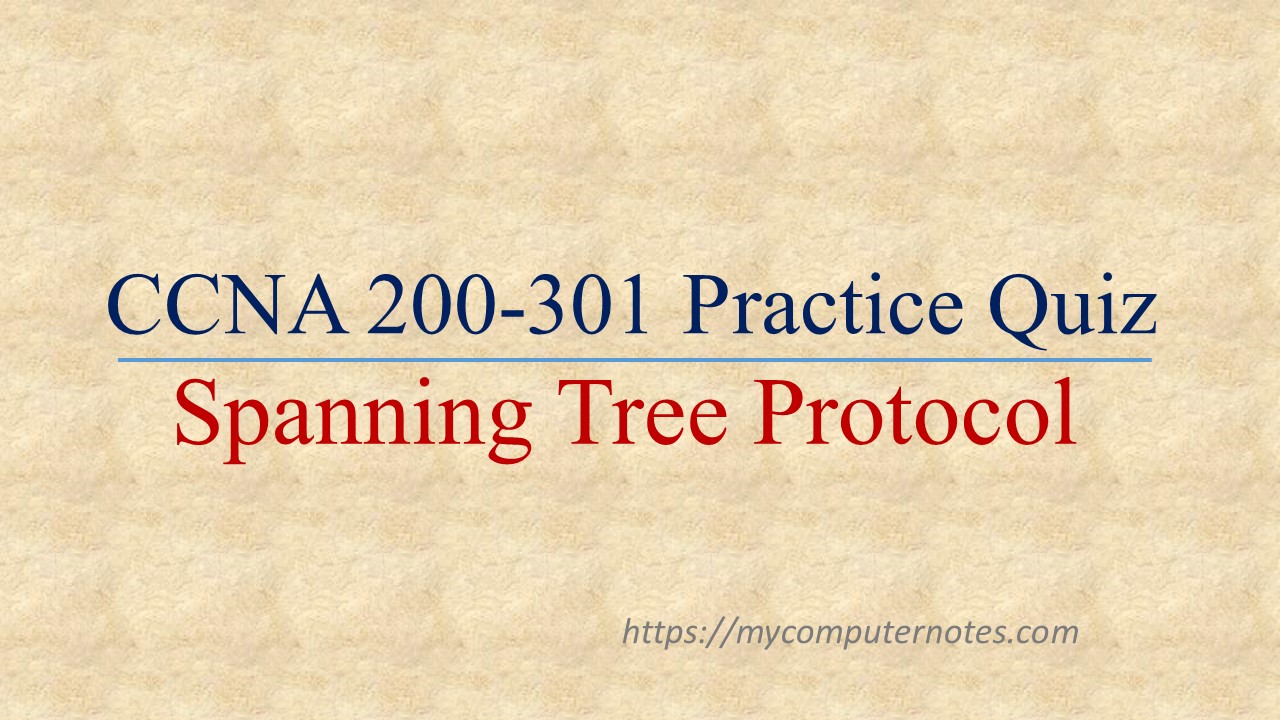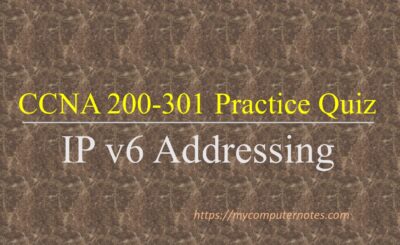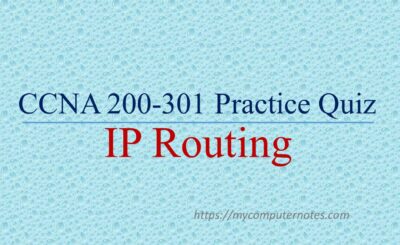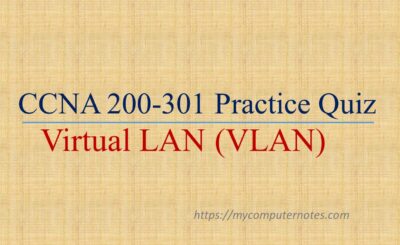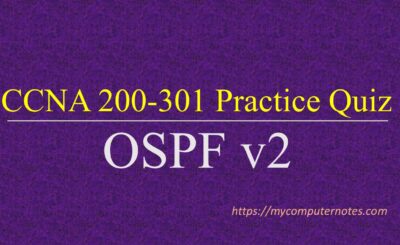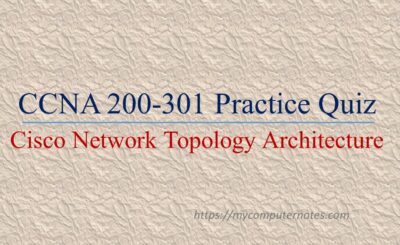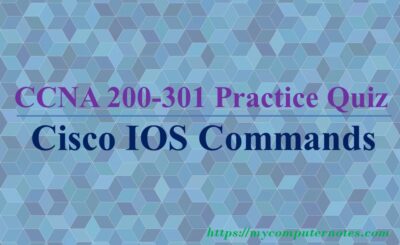
This quiz section contains a CCNA practice quiz on spanning tree protocol. You can test your skills on the basic functionalities of spanning tree protocol in layer 2 switching. The following quiz section contains multiple-choice questions, drag and drops as well as “refer to the exhibit” questions as per the CCNA 200-301 Exam pattern.
The CCNA practice quiz is very helpful for the preparation for CCNA 200-301 certification exam.
Each question is provided with the correct answer and an explanation for the correct answer. Click on the button named “Answer” just below the question to view the answer and the explanation. You can hide the answer and the explanation by re-clicking the “Answer” button.
CCNA Practice Quiz – Spanning Tree Protocol
|
1. Why spanning tree protocols are implemented in layer 2 switching?
Answer: Option B Explanation: The correct option is B. The purpose of implementing STP in layer 2 switching is for loop avoidance due to redundant link.
|
|
2. Which of the following parameters are used by the spanning tree protocol to elect a root bridge? Choose two.
Answer: Options A and B Explanation: The correct options are A and B. At first, STP uses the bridge priority to select the root bridge. If the tiebreaker occurs, then it uses the mac addresses with the least value for the root bridge selection.
|
|
3. Which of the following events occur, when STP is disabled on a switched network?
Answer: Option D Explanation: The correct option is D. All of the above events occur when STP is disabled in a switched network.
|
|
4. The classic spanning tree protocol (original STP) is specified in IEEE standardization as _____________.
Answer: Option A Explanation: The correct answer is A. The original STP is published by IEEE as 802.1d standard.
|
|
5. Which of the following messages are shared by STP enabled switches among themselves to discover the bridging loops in the layer2 network?
Answer: Option B Explanation: The correct option is B. BPDU stands for the bridge protocol data unit. BPDU messages contain information about the spanning tree protocol.
|
6. Which of the following is not a switch port state of an STP enabled switch?
Answer: Option E Explanation: The correct option is E.
|
7. Which of the following statements are not true about root bridge?
Answer: Option B Explanation: The correct option is B. There can be only one root bridge in a single network segment.
|
|
8. What is the default cost value of the FastEthernet port of Cisco Catalyst switch 2960?
Answer: Option C Explanation: The correct answer is option C. The cost value for the FastEthernet port is 19. The link speed for fastethernet port is 100mbps.
|
|
9. During the selection of the root bridge, the bridge priority is identical for two switches. Which of the following will decide the final selection of root bridge between them?
Answer: Option B Explanation: The correct answer is option B. In case, the bridge priority is the same during root bridge selection, the mac address with the least value is taken for the election of the root bridge.
|
10. What does R in RSTP stands for?
Answer: Option B Explanation: The correct answer is B. RSTP stands for Rapid Spanning Tree Protocol.
|
|
11. RSTP is a newer version of the original STP. It is specified by IEEE as ___________ standards.
Answer: Option D Explanation: The correct answer is option D. RSTP is introduced by IEEE in 2001 as 802.1w standard.
|
|
12. Which of the following are the valid STP port state? Choose three.
Answer: Options A, B and D Explanation: The correct option is A, B and D. Forwarding, listening and blocking are the valid states of a switch interface. Whereas denying and transferring are invalid.
|
13. The default STP priority value for all layer 2 switch is _______________.
Answer: Option D Explanation: The correct option is D. |
|
14. Which of the following commands will allow a switch port or trunk port to enter into the forwarding mode as quickly as possible from the blocking state?
Answer: Option C Explanation: The correct option is C.
|
|
15. Which of the following statements are true about RSTP?
Answer: Option D Explanation: The correct option is D.
|
|
16. Which of the following statements are true about root port?
Answer: Option D Explanation: All of the above options are about the characteristics of the root port.
|
17. Which of the following statements are true about designated ports?
Answer: Option D Explanation: All the options are true about the designated ports.
|
|
18. During spanning-tree _________ state, the port in a switch does not involve in frame forwarding. It discards all the received frame. It only listens to the BPDU and processes it.
Answer: Option B Explanation: The correct option is B.
|
|
19. By default, after how many seconds the switch port transits from learning to forwarding state?
Answer: Option B Explanation: The correct option is B.
|
|
20. What does LACP stand for?
Answer: Option B Explanation: The correct option is B. Link Aggregation Control protocol helps to combine multiple network connections to increase throughput.
|
| ← Prev | Next → |
